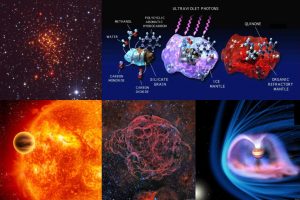Tag: gioviani caldi
The chemical composition of the Hot Jupiter HD 209458b tells us about its history. The study: “Five carbon- and nitrogen-bearing species in a hot giant planet’s atmosphere” of P. Giacobbe (INAF – OATo) recently appeared on Nature
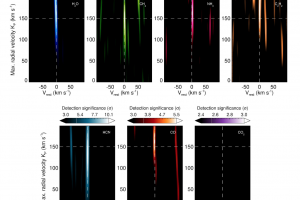
The discovery of the first planet orbiting around another star occurred in the 1995, thanks to the astronomers Michel Mayor and Didier Queloz. This discovery set a milestone in astronomy both because it was the first observational confirmation of the existence of planets orbiting around other stars (in this case 51 Pegasi), and because of the nature of this exoplanet. It
» Read moreChemical composition and elevation of the atmosphere of WASP-121b. The study: “Atmospheric Rossiter-McLaughlin effect and transmission spectroscopy of WASP-121b with ESPRESSO” of F. Borsa (INAF-OA Brera) recently appeared on A&A)
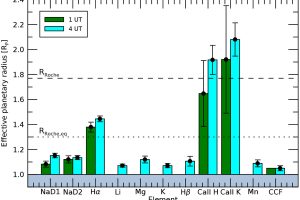
Ultra-hot Jupiters are gaseous planets orbiting at close distances from their central stars, with rotation periods shorter than 3 days. Their atmospheres are thus heated, more than 2000 degrees, by the incident radiation emitted by the central star. For this reason, the atmospheres of ultra-hot Jupiters shows peculiar properties compared with planets of other types. For instance, they are affected
» Read moreAn Hot Jupiter that may not be there. The study: “The GAPS Programme at TNG. XXVII. Reassessment of a young planetary system with HARPS-N: is the hot Jupiter V830 Tau b really there?” of M. Damasso (INAF-OATo) recently appeared on A&A
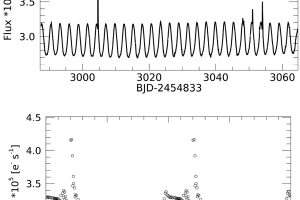
Some of the exoplanets known so far belong to classes that do not exist in our Solar System. For instance, the class of the Hot Jupiters, i.e., gaseous giant planets orbiting at close distances from their stars (typically less than 0.5 AU, Astronomical Unit, where a 1 AU is the average distance between Sun and Earth, about 150 million km).
» Read moreHot Jupiters around young stars. The study: “The GAPS Programme at TNG. XXI. A GIARPS case study of known young planetary candidates: confirmation of HD 285507 b and refutation of AD Leonis b” of I. Carleo (Van Vleck Observatory/INAF-OA Padova) recently appeared on A&A
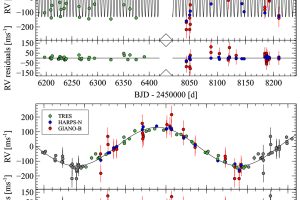
The discovery of the first exoplanet in 1995 was a challenge to our knowledge of the architecture of planetary systems. The planet orbiting around the star 51 Peg, in fact, was different than the planets in our Solar System: it was a gaseous giant orbiting at only 0.05 Astronomical Units (A.U., where 1 A.U. is the average distance between Earth
» Read moreEvaporating planets. The study: “Photo-evaporation of close-in gas giants orbiting around G and M stars” of D. Locci (INAF-OAPA) recently appeared on A&A
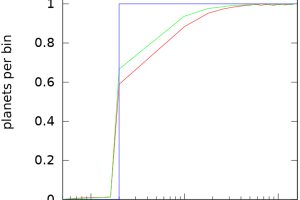
The stellar magnetic activity can produce an important emission of energetic X-ray and UV radiation. This emission is typically variable, both because the magnetic activity changes over short time scales, and because it decreases during stellar evolution. For instance, solar-type stars in the pre-main sequence phase (i.e. younger than 30 million years) are thousand times brighter in X-rays than main
» Read more
